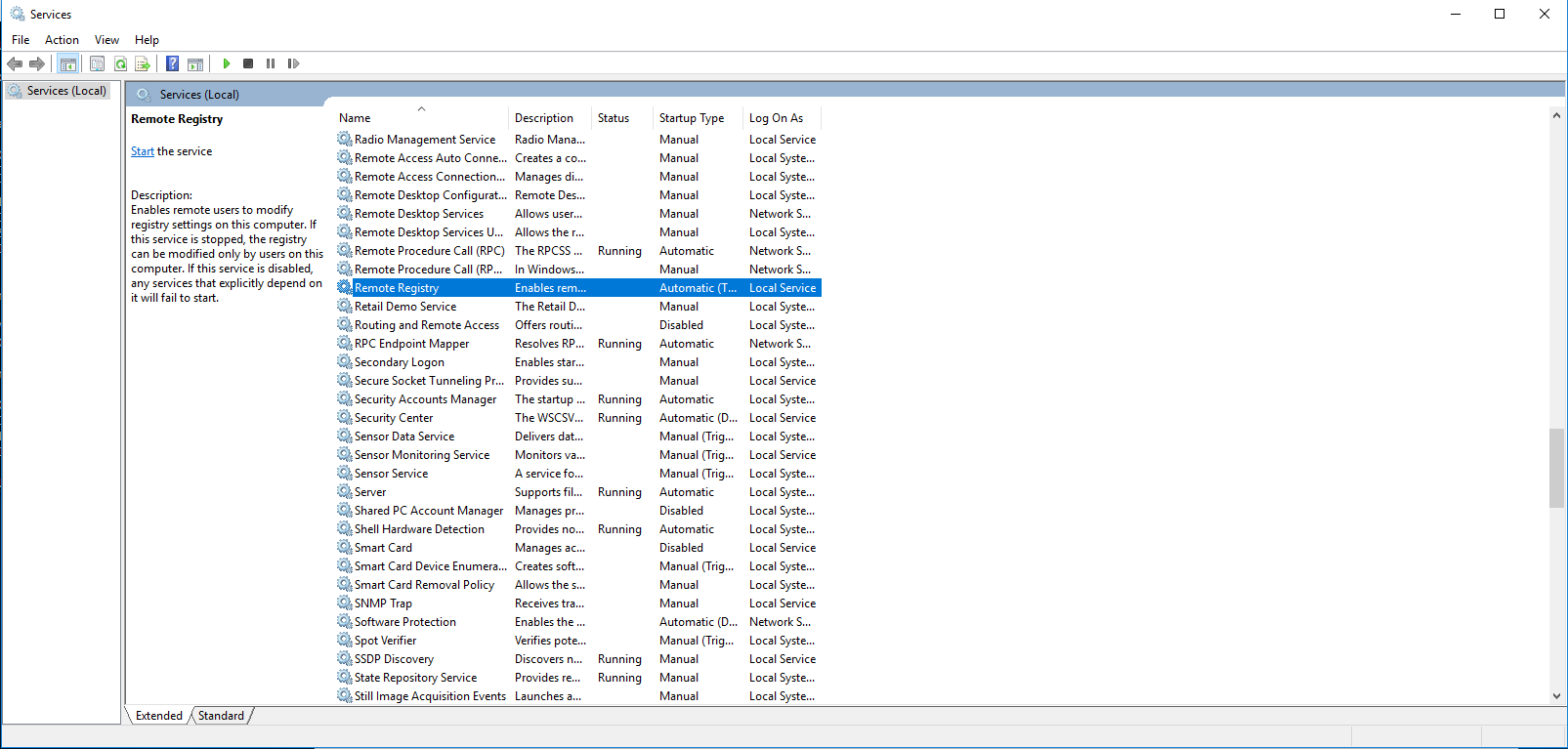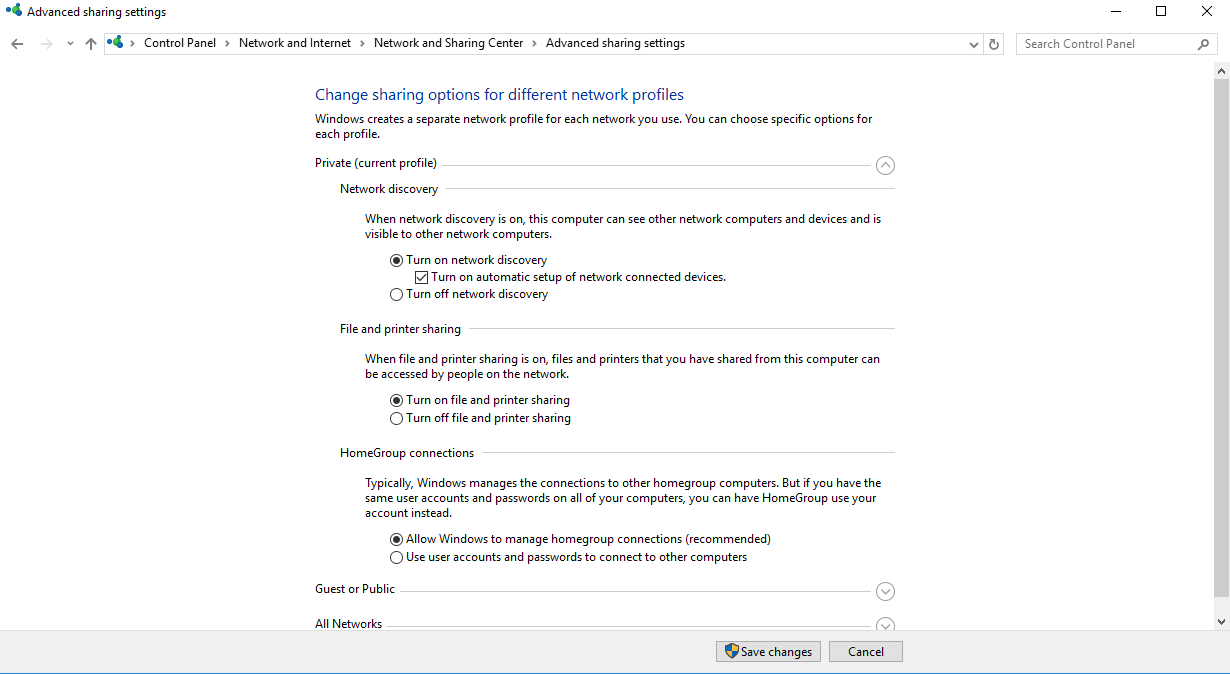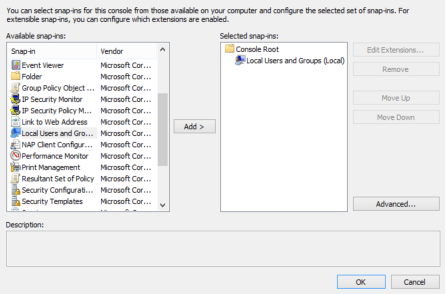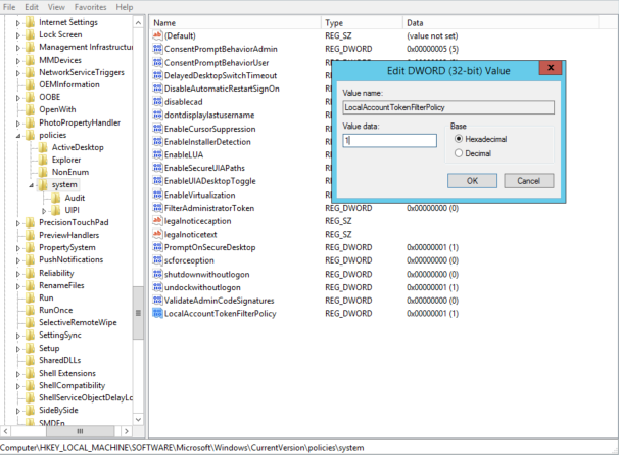Windows 10/Windows 2019 Server
Purpose
This document describe the set up of authenticated scanning for Windows 10 and Windows 2019 Server targets using OUTSCAN or HIAB.
Introduction
This guide provides you with the technical procedure to succeed with authenticated scanning for Windows 10/Windows 2019 Server targets when using OUTSCAN or HIAB.
Requirement
Use SMB-based authenticated scanning in Outpost24 to access Windows hosts using provided credentials with remote registry for deeper security assessments.
The Authenticated Scanning Using SMB requires that .NET framework version 3.5 or higher is installed.
When performing authenticated scanning against windows hosts, the scanner creates and starts a service called O24 Auth on the target machine.
This service is used to execute commands on the target and send the results back to the scanner.
Do not remove the service during scanning, it will stop and remove itself after it is done.
Set Up
To succeed with authenticated scanning using SMB for Windows 10 and Windows 2019 Server targets, follow the steps given below:
The following steps are only applicable for Windows 10 Pro or higher, NOT Windows 10 Home.
Step 1 - Enable Remote Registry
To enable Remote Registry (Optional, can also be configured within the scanner)
Go to Start and enter Run in the search field to open the Run Prompt.
To open Services, enter services.msc in the Run Prompt and press OK.
Under Services (Local), right click Remote Registry and select Properties.
If Remote Registry is already enabled on your device, skip to Step 2.
In Remote Registry Properties (Local Computer), change the Startup Type to Automatic and start the service.

Step 2 - File and Printer Sharing
To turn ON File and Printer Sharing:
Go to Start and enter Network and Sharing Center in the search field to open the Network and Sharing Center.
In Network and Sharing Center, go to Change advanced sharing settings, located on the left-hand side.
In your current profile, Private/Guest or Public, select Turn on file and printer sharing.
Click Save Changes.

Step 3 - Administrator Rights
Go to Start and enter mmc in the search field to access Microsoft Management Console.
Select Local Users and Groups located in the left pane of the Microsoft Management Console window.
If Local Users and Groups is not listed:
Click the File menu
Select Add/Remove Snap-in
Select Local Users and Groups
Click Add
Select Local Computer
Click Finish
Click Ok
Enter the Groups folder and double click the Administrators group
If the account is not listed under Members:
Click Add
Enter the name of the already created account that you wish to add
Click Check Names
Click Ok
Click Ok

 |  |
The following steps are not recommended, if possible use the domain user account.
Make sure that the Windows User Account Control (UAC) is disabled.
Go to Start and enter Run in the search field to open the Run Prompt.
In the run prompt enter regedit and click OK to open the Registry Editor.
Navigate to HKEY_LOCAL_MACHINE\SOFTWARE\Microsoft\Windows\CurrentVersion\Policies\system.
Right click the System Folder.
Choose New >> DWORD (32-bit) Value and name the DWORD LocalAccountTokenFilterPolicy.
Right click the newly created DWORD and select Modify.
In the Edit Window set Value Data to 1.
If User Account Control is disabled, EnableLUA must be set to 0 in
HKEY_LOCAL_MACHINE\SOFTWARE\Microsoft\Windows\CurrentVersion\Policies\System.

Step 4 - Memory Leak in the Remote Registry Service
To resolve the Memory Leak in the Remote Registry Service:
Go to Start and enter Run in the search field to open the Run Prompt.
In the Run Prompt enter regedit and click Ok to open the Registry Editor.
Locate the following registry sub key:
HKEY_LOCAL_MACHINE\SOFTWARE\Microsoft\WindowsNT\CurrentVersion\RemoteRegistry.In the details pane, on the right-hand side, double-click DisableIdleStop.
Change the value to 00000001.
Related Articles
- O24AUTH
- Windows 2016 Server
- Authenticated Scanning Using SSH
- SMB Authentication from OUTSCAN/HIAB
- Windows 2012 R2 Server
- Windows 7
- Windows 2008 R2 Server
- How to Test SMB Authentication
- Authenticated Scanning Using SMB
- Core Installation
- Windows 8.1
- Authenticated Scanning Using WinRM
- Supporting Authenticated SNMP Support Without Net-SNMP Access to Epoch of RPM Database
Copyright
© 2026 Outpost24® All rights reserved. This document may only be redistributed unedited and unaltered. This document may be cited and referenced only if clearly crediting Outpost24® and this document as the source. Any other reproduction and redistribution in print or electronically is strictly prohibited without explicit permission.
Trademark
Outpost24® and OUTSCAN™ are trademarks of Outpost24® and its affiliated companies. All other brand names, product names or trademarks belong to their respective owners.
